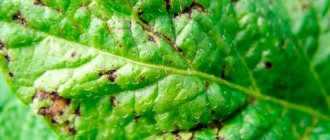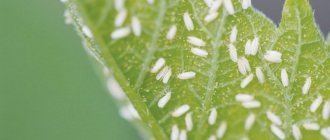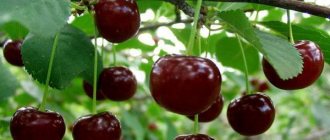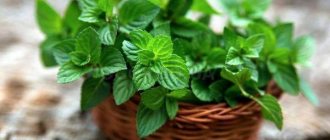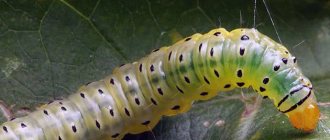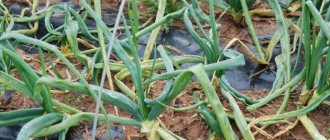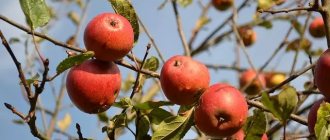Gardening » Citrus
0
1241
Article rating
Kira Stoletova
Diseases and pests of citrus fruits cause many difficulties when growing indoor lemon, tangerine, calamondin and orange at home. This is often due to improper care of the plant.
Diseases and pests of indoor citrus fruits
Diseases of lemons indoors
Indoor lemon has a fairly large list of possible diseases. Let's look at the most common ones.
Chlorosis
This disease occurs as a result of stagnation of moisture, acidification of the soil, deficiency of iron and other elements. In this case, there is a decrease in the activity of photosynthesis and the formation of chlorophyll. The first sign is yellowing of the leaves and then their falling off. Then the tops of the shoots may dry out, the roots die, and the leaves become shredded.
With chlorosis, the soft tissues of the leaves turn yellow, but the veins remain green.
It is clear that the disease is caused by a violation of care, so first of all you need to eliminate them:
- Get rid of stagnant moisture, dry the soil, and replace it if necessary. Rinse and dry the drainage. You may need to transplant it into another, smaller pot.
- Test the acidity of the soil using litmus paper. If it is high, then the soil should be deoxidized by adding fluff lime or chalk. To do this, take half a tablespoon of powder and dilute it in a glass of warm water, then water the soil in the pot. The acidity of the water flowing from the drainage holes is measured, and if it is still high, the procedure is repeated until the pH level is within 6-6.5 units.
- Replenish iron deficiency by adding preparations containing it in chelated form, such as Ferrofit, Ferrilen, Antichlorosis, Micro-Fe and the like. Or you can simply dissolve 20-40 grams of iron sulfate in one liter of water and feed the plant.
Phyllosticosis
This fungal disease is also called brown spot. A sign of the disease is the formation of brown or dark brown spots of round, oval or irregular shape on the leaves. If treatment is not started, the spots grow and cover the entire surface of the leaf blade, after which the leaves dry out and fall off. Favorable conditions for the development of fungus are dampness and air temperature of +25 °C and above. The source of infection is soil, water, purchased flowers, etc.
When affected by phyllosticosis, brown spots form on the leaves of plants
To cure a plant, you should tear off the affected leaves and treat the crown with fungicides (these are drugs to combat fungal diseases). Popular drugs are Horus, Quadris, Abica-Peak and others. It is better to use them outdoors, but if you still have to use them indoors, then take precautions - prevent the drugs from getting on food or dishes, and ventilate the room after treatment. If the infection is not severe, then it is better to use biological products such as Fitosporin-M, which is absolutely safe for humans, animals and bees. At the same time, it is also a fertilizer, as it contains humic acids.
Anthracnose
This is also a fungal disease that often affects lemons in greenhouses and conservatories. If the room has high humidity and temperature, then indoor lemon may also become infected. Anthracnose can be recognized by the formation of dark brown spots on the leaves, covering the edges. If the infection is severe, the fungus spreads to the shoots and fruits, all leaves dry out, and the above-ground part of the plant dies.
Anthracnose can be recognized by the formation of dark brown spots on the leaves, covering the edges
Prevention and treatment are the same as for other fungal diseases.
Citrus cancer
If dark brown spots with a yellow border, similar to small tumors, have formed on the leaves of the lemon, this means that the plant is infected with the citrus canker virus. It is not able to cause harm to a healthy plant, but if it is weakened by other diseases or poor quality care, then cancer will begin to develop. At the same time, it, starting on the leaves, will subsequently move to the fruits and shoots. We have not yet learned how to fight the disease, so the plant will definitely die. Without expecting this, it is destroyed as quickly as possible so as not to infect healthy lemons and other citrus fruits, if any. Prevention - careful adherence to the rules of lemon care, as well as regular treatment of the crown with a weak solution of potassium permanganate at intervals of 3 months.
If dark brown spots with a yellow border appear on the leaves of the lemon, the plant is infected with the citrus canker virus.
Video: lemon diseases
Lack of nutrition
The lack of nutrients necessary for citrus trees in the substrate (chlorosis) leads to changes in the appearance of plants:
- With an insufficient amount of nitrogen, the overall growth of the plant is inhibited, chlorosis occurs, which is expressed in the covering of old citrus foliage with yellow specks, followed by replacement of the color of the entire leaf blade and loss of glossy shine. The shoots stop growing.
- A lack of potassium leads to the appearance of folds between the veins and the formation of grooves in the foliage. The upper leaf tier curls towards the bottom, turns bronze at the edges and subsequently turns brown, dries, the development of citrus is slowed down, adult shoots die off, and young shoots grow shorter. At the flowering stage, the foliage falls abundantly, the fruits grow small, with a thin peel.
- With an insufficient amount of magnesium, chlorosis appears on the tissues of the leaf blade parallel to the middle vein, gradually spreading in all directions.
- With a lack of phosphorus, citrus leaves become dull, dry out at the end, turn yellow and subsequently acquire a rusty brown color, newly emerging citrus leaves become smaller and grow narrow, the flowering stage is weak, the yield decreases, the fruits develop a thick peel and increased acidity, the shape changes.
- A lack of iron and a small amount of manganese, sulfur and zinc manifests itself in the form of a contrasting network consisting of green veins, leading to smaller foliage and fruits. Newly grown shoots are weak and often fall off.
- A small amount of calcium leads to the folding of the upper leaves by 1/3 of the length of the leaf blade with a bend along the central vein and subsequent death of the edges. After some time, the damaged castings fall off.
- A lack of boron disrupts the acid-base balance of the substrate and leads to wilting and subsequent shedding of the ovaries, citrus trees drop unripe fruits, young leaves turn yellow and curl, acquiring a light color and becoming covered with watery spots and becoming translucent.
To avoid nutritional deficiencies in citrus trees, plants are regularly fertilized throughout the calendar year, with an interval of 10 days from March to September and once a month from October to February. As fertilizing complexes, they use ready-made mineral compositions or folk remedies - sources of necessary elements.
Pests on lemon
Of course, in indoor conditions it is more difficult for insects to get to the plant, but there are still ways.
Shchitovka
This is a hemiptera insect with a small (0.5-5 mm) body covered with a dense shield consisting of one or two larval skins and a secretory waxy part. Because of this, scale insects on the plant are sometimes perceived as droplets of wax. Young insects move actively, settling throughout the lemon. In adulthood, scale insects lose the ability to move and stick to the plant. Feeding on its juice, they themselves secrete a sweet liquid, which accumulates on the leaves and shoots, making them sticky. It clogs pores, preventing respiration and photosynthesis. This liquid is also a breeding ground for sooty fungus. If you do not fight the pest, the result will be disastrous - the leaves will curl, dry out and fall off, the plant will weaken and die.
Scale insects on the leaves resemble droplets of wax
Insecticides are used to kill pests. The contact preparation Fitoverm can be used against young larvae, but adult insects are reliably protected from its damaging effects by the shell. Therefore, systemic drugs that penetrate the plant’s vascular system will be more effective. Pests, feeding on poisoned juice, die. The best of this group for lemon are Aktara and Aktellik. They can not only spray the crown, but also water the soil to enhance the effect. But it should be remembered that Actellik has a strong unpleasant odor, so it can only be used outdoors. In addition, you can use various folk remedies - onion and garlic infusions (they are prepared by keeping chopped vegetables in water for about half a day at the rate of 50 grams per half liter), soap-kerosene solution (per liter of water 40 grams of grated soap and 1 ml kerosene) and others. In the initial stages of insect damage, you can wash off with soapy water using a brush or sponge.
Aphid
The smallest (0.5-3 mm) insect is widely known to everyone who has a garden, vegetable garden or indoor plants. As a rule, light green aphids can be found on lemons. Its harmful effect is similar to that of the scale insect - the aphid also feeds on the sap of leaves and shoots, secretes a sticky sweet liquid, and curls the leaves. The means and methods of dealing with it are also similar.
Light green aphids are more common on lemons.
Spider mite
This pest has microscopic dimensions (0.2-0.6 mm), and is not easy to see with the naked eye. Therefore, it is usually possible to detect its presence on a lemon only after some part of the leaves is damaged. Settling on the underside of the leaf, these arthropod arachnids pierce the leaf blade and feed on the sap. On the front side of the leaf, yellow spots form around the punctures, which are used to determine the presence of a mite. Subsequently, the leaves curl into irregularly shaped lumps, which the mite entangles in a web, thus equipping a nest.
Very small yellowish dots on the leaves indicate damage by spider mites
Insecticides are powerless against ticks. They are fought with acaricides (these are special anti-tick preparations) and universal insectoacaricides, for example, the above-mentioned Fitoverm and Actellik. In indoor conditions, Demitan is used, which successfully copes with the parasite, but it is dangerous for fish, so you should protect the aquariums in the house from getting into them.
Mealybug (white aphid, hairy louse)
It is small in size (from 3 to 6 mm) and has an oblong body, covered with a powdery, cotton-like white coating. Like the previous pests discussed, it is sucking and feeds on sap from all parts of the plant. A variety of citrus mealybug can also attack lemon roots. It's very easy to get rid of it. Since the bug is afraid of moisture, when it is detected, it is enough to simply bathe the lemon in warm soapy water, thoroughly washing off the insects. Then you should treat the crown with a strong-smelling infusion, for example, tobacco or garlic, to repel new pests.
The mealybug has an oblong body covered with a mealy, cotton-like white coating.
Video: Aktara treatment for pests
Homeopathy for periodontal disease
Homeopathic remedies for the treatment of periodontal disease at home must be selected individually for each person. However, there are a number of names that are available without a prescription and can be used for self-treatment.
- Acidum nitricum 6 - taken in case of loose teeth, loose gums, bleeding gums, strong salivation, as well as an unpleasant smell of rot from the mouth. Take 7 grains twice or thrice a day.
- Phosphorus 6 – taken in case of predominant periodontal disease in the upper jaw. Dose of application – 5 drops twice or thrice a day.
- Iodium 6 – taken in case of predominant periodontal disease in the lower jaw. You need to take 5 drops twice a day.
- Alternately sodium carbonicum 6 and silicea 6 are taken for periodontal disease caused by diabetes mellitus. The daily dose is 7 drops of each drug.
However, it is worth remembering that homeopathy is not a panacea for periodontal disease. Treatment of periodontal disease at home using homeopathic remedies should also be supported by medications and daily oral hygiene.
Some Frequently Asked Questions About Lemon
It is not always possible to determine the cause of deviations in the development of lemon. Let's answer some common questions about diagnosing problems.
Brown spots appeared on the lemon
This indicates infection with fungal diseases - anthracnose or phyllosticosis. In the worst case scenario, it could be citrus canker.
Why does a lemon drop flowers and what to do?
The reasons for this phenomenon may be various violations of lemon agricultural technology:
- Drafts and sudden changes in temperature during flowering.
- Moisture deficiency or excess.
- Inadequate nutrition, deficiency of potassium and phosphorus.
- Too much flowering, the plant sheds excess flowers.
- Moving a blooming lemon to other rooms, turning it 90-180°.
- Pest infestation.
To eliminate the problem, you need to normalize the living conditions, normalize by removing excess flowers (leave one of the largest buds per 10-15 leaves), and get rid of pests.
How can you treat lemon when rolling leaves?
To answer this question, you need to know the causes of the phenomenon. They can be like this:
- Leaves may curl due to lack of water. You should follow the rules for maintaining optimal humidity for lemon.
- If there is a lack of fresh air, the leaves can also curl. Therefore, with the onset of warm days, indoor plants should be moved to verandas or under awnings and similar places, protected from drafts and direct rays of the sun.
- If after watering the leaves do not straighten and the situation remains unchanged, this means that the plant is deficient in boron. In this case, you need to make up for the deficiency by adding a 0.2% solution of boric acid (2 g per liter of water).
- If the leaves are not rolled into a tube, but simply bent, then this indicates a copper deficiency. For such symptoms, you need to spray the lemon with a 0.5% solution of copper sulfate.
- And the leaves can curl as a result of damage by aphids or scale insects.
Why do lemon leaves have sticky leaves?
The most common cause is the sweetish secretions of aphids or scale insects. And also, perhaps, with excessive watering, the plant itself releases a sugary liquid.
Popular varieties
The most popular varieties for growing in greenhouse and indoor conditions are:
Unshiu
Clementine
Kovano Vasya
- Mandarin Unshiu - grows up to 80 cm at home, has a lush crown, dark green foliage, blooms beautifully and bears fruit well.
- Clementine is the variety that has the sweetest and most delicious fruits. The harvest in the apartment will not be large, however, bright orange fruits will add color to the house, and the light aroma of flowers will add comfort and ease.
- Vasya is the most suitable variety for growing at home. The bushes do not grow to more than 50 cm. They almost always bear fruit from the first year. Fruits hang on the branches for a long time without falling off, pleasing the eyes of their owners. The leaves, unlike Unshiu, are bright green and arrow-shaped.
To summarize, we can give some universal advice to those who want to grow a beautiful and healthy tangerine tree at home:
- Monitor watering, temperature, and humidity.
- Replant and graft the plant in a timely manner.
- Choose the right varieties of fruit to grow indoors.
- Prune the tree and remove pests before they multiply.
- Love the tangerine bush.
By listening to these simple tips, you will be rewarded with a lush, fresh and pleasing plant that will become a worthy decoration of your home.
Vitamins for periodontal disease
In addition to various medicinal plants and medications in combination with homeopathic remedies, vitamins are also needed when treating periodontal disease at home. Vitamins for periodontal disease most significantly influence the course of the disease precisely at its initial stage.
The most commonly used vitamins for periodontal disease are:
- Vitamin B1 will help if periodontal disease is based on the development of other diseases (diabetes mellitus, Botkin's disease, pathologies of the nervous system, stomach ulcers and others). Improves metabolism and periodontal trophism. Taken for 30-40 days, 2-3 times a day, 0.005-0.01 g.
- Ascorbic acid (vitamin C) will help with bleeding gums. Taken after meals twice or thrice a day.
- Vitamins B6 and B12 in the form of injections are prescribed to patients with periodontal disease due to diabetes mellitus, neurasthenia, or pathological development of the digestive system.
- Vitamin A is prescribed for the renewal of gum tissue. The course of treatment is 3 weeks, dosage – 40 drops or 1 capsule daily.
- Vitamin E helps normalize oxidative processes in the body. Treatment involves taking 50-100 ml of 306 oil solution daily.
- Folic acid improves metabolic processes in the body.
- Beta-carotene has immunostimulating and antioxidant effects.
- Quercetin relieves bleeding gums and also has anti-inflammatory and antioxidant effects.
- Zinc renews various tissues of the body, and also relieves inflammation, restores immunity and has an antioxidant effect.
- Calcium saturates the tissues of bones and teeth.
- Selenium also reduces inflammation and also acts as an immunomodulator and antioxidant.
Main symptoms of rhinitis
The manifestations of this disease depend on the type and stage of the runny nose.
On the first day of development of infectious rhinitis, dryness and burning sensation appear in the nasopharynx. Then a feeling of congestion occurs as the mucous membrane swells. Taking immediate action helps cure a runny nose at home, without a visit to the clinic. In the second stage, abundant liquid discharge appears. Later they thicken and acquire a greenish-yellow color.
Allergic rhinitis is manifested by symptoms such as:
- itching,
- tickling,
- tingling,
- sneezing,
- profuse rhinorrhea (nasal discharge).
If it lasts for a long time, the sense of smell may be impaired. Crusts and growths form in the nasal turbinates, and mucus or pus is constantly released.
Acute traumatic rhinitis begins abruptly and, as a rule, affects one side. As a result of damage, the mucous membrane turns red and swells. After a few hours, mucus begins to come out of one of the nostrils.
With vasomotor rhinopathy, breathing is difficult due to nasal congestion. Transparent discharge appears. There is an unpleasant sensation caused by the flow of mucus along the back wall of the nasopharynx.
Typical symptoms of rhinitis can be combined with headache, weakness, and a feeling of general malaise. Therefore, regardless of the type and form, a runny nose must be treated quickly.
Malsecco: what causes the disease
If kept indoors, tangerines can contract this infection during the winter months. The disease manifests itself in the fact that the leaves of the plant become dull, begin to fall off, the branches become orange in color, and gradually dry out. The tips of the shoots dry first, then these changes move closer to the trunk, and then move to the base. Mandarin cannot be cured. Phoma tracheiphila Petri spores are easily spread by the wind and land on plants and garden tools.
The beautiful, but very delicate tangerine plant is often susceptible to infections, especially fungi. Diseases affect both individual parts of the tree and the entire plant.
It is important to recognize the disease in time and take measures to save the tangerine
Viral
Diseases caused by viruses cause significant damage to the development of a tree, but if the source of infection is detected in a timely manner, gardeners achieve significant success in the fight for the future harvest.
Striations
The cause of the disease is a virus called Apple stem grooving virus. At the junction of the scion and the rootstock, pits, furrows, scars, large stripes and swelling of the trunk bark are observed. There are brown spots or lines of a necrotic nature. Typically, the shoots of such infected trees grow slowly, fruiting occurs prematurely, and in most cases the apple tree dies.
Often, on plants with obvious signs of infection, the presence of certain types of pests can be seen.
Unfortunately, today there are no effective methods to combat trunk grooves. When the first symptoms are detected, it is advisable to uproot and burn the tree, protecting other plantings of garden crops from the threat of transmission and spread of infection.
paniculation
Also known by names such as proliferation or "witch's broom". The peak of infection occurs in the second half of summer. During this period, the color of young shoots changes to red, yellowing and falling leaves are observed.
According to the recommendations of experienced gardeners, it is not advisable to spend time and money on treating paniculation. Apple trees with traces of infection are subject to uprooting and further burning.
Mosaic
It is characterized by the appearance of a green-yellow or bright yellow mosaic pattern on the surface of the foliage. Accompanied by the formation of small fruits with loss of taste. The general appearance of the apple tree can be described as emaciated and weakened.
Experienced agronomists recommend following some rules:
- It is necessary to buy seedlings from trusted nurseries of fruit and berry crops.
- Only healthy samples without signs of infection are suitable for planting.
- Detection of the disease at a later stage does not make sense for further treatment; such samples must be disposed of.
Cracking
In apple trees infected with the virus, the yield noticeably decreases, the fruits become smaller in size and weight, and become covered with unattractive spots without a specific shape. Characteristic star-shaped cracks form in their center. The skin around them darkens significantly.
The only way to cope with the disease is by destroying the tree. In order to prevent and prevent infection, it is necessary to treat the crowns and tables against pests, and select only healthy samples for planting.
Rosette
It manifests itself in the formation of leaves of small deformed shape, the structure of the plate becomes stiffer, and the color changes to yellow-green. Then they are twisted into a cup shape. Fruiting decreases, apples decrease in size, and taste deteriorates.
To prevent further spread, such areas must be removed and burned. To process sections of branches, it is necessary to use a mixture of paint (oil) and zinc sulfate.
